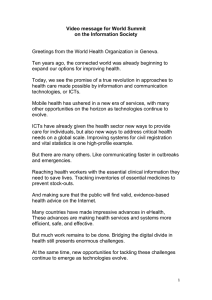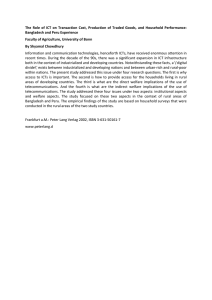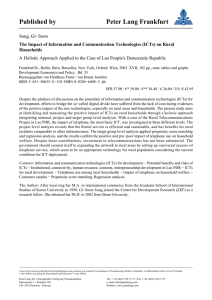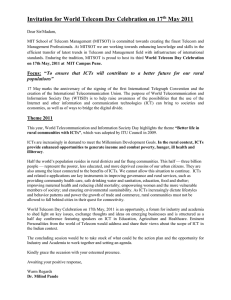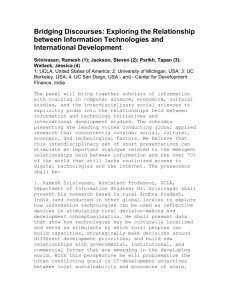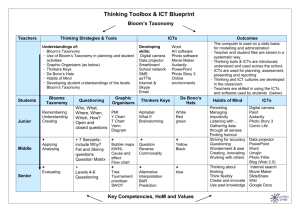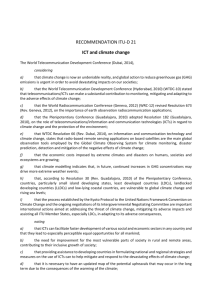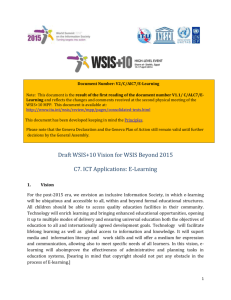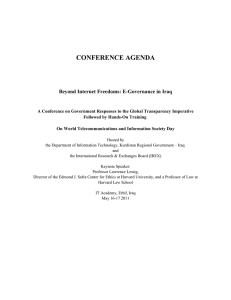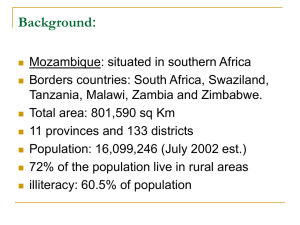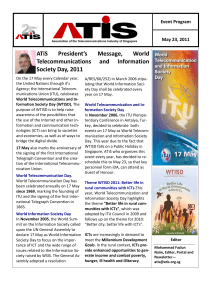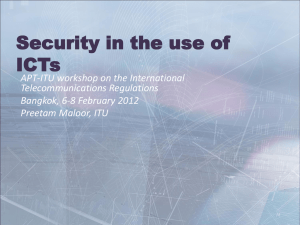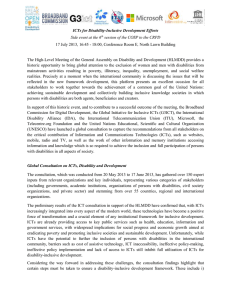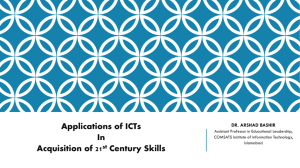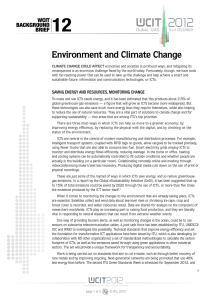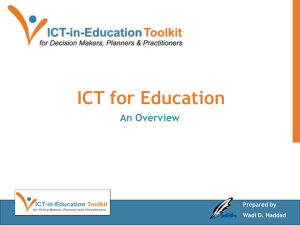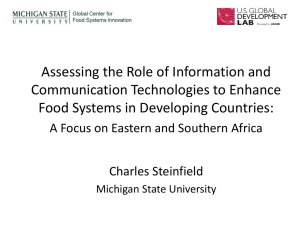REZAGO EN EL ACCESO A Y EN LA UTILIZACIÓN DE LAS
advertisement
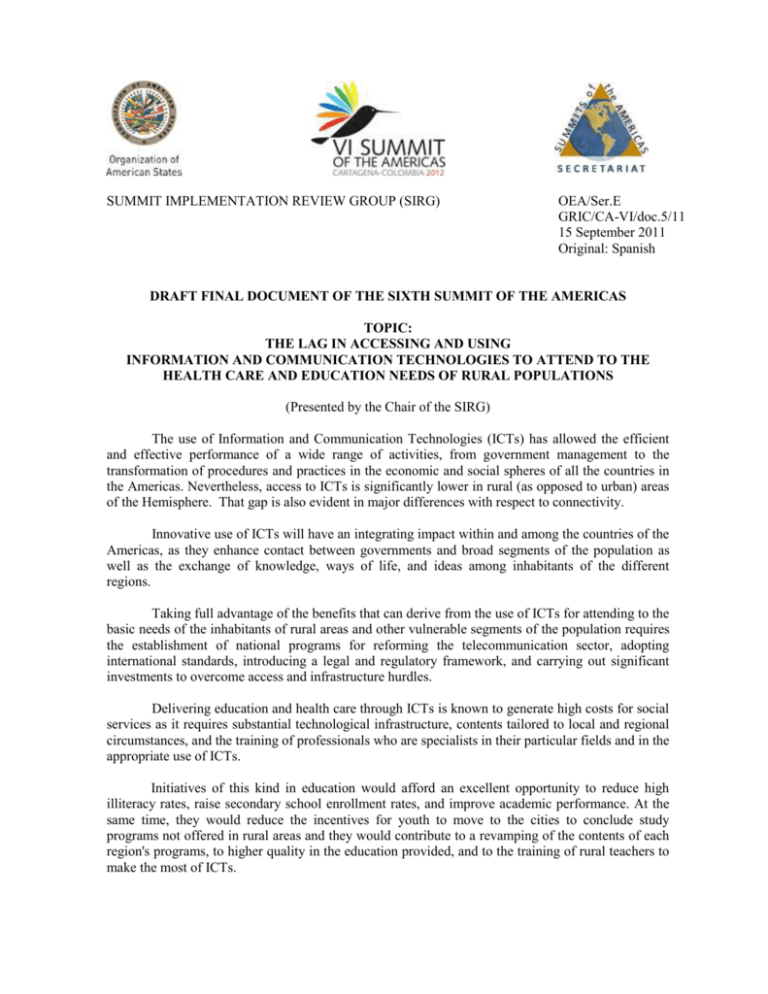
SUMMIT IMPLEMENTATION REVIEW GROUP (SIRG) OEA/Ser.E GRIC/CA-VI/doc.5/11 15 September 2011 Original: Spanish DRAFT FINAL DOCUMENT OF THE SIXTH SUMMIT OF THE AMERICAS TOPIC: THE LAG IN ACCESSING AND USING INFORMATION AND COMMUNICATION TECHNOLOGIES TO ATTEND TO THE HEALTH CARE AND EDUCATION NEEDS OF RURAL POPULATIONS (Presented by the Chair of the SIRG) The use of Information and Communication Technologies (ICTs) has allowed the efficient and effective performance of a wide range of activities, from government management to the transformation of procedures and practices in the economic and social spheres of all the countries in the Americas. Nevertheless, access to ICTs is significantly lower in rural (as opposed to urban) areas of the Hemisphere. That gap is also evident in major differences with respect to connectivity. Innovative use of ICTs will have an integrating impact within and among the countries of the Americas, as they enhance contact between governments and broad segments of the population as well as the exchange of knowledge, ways of life, and ideas among inhabitants of the different regions. Taking full advantage of the benefits that can derive from the use of ICTs for attending to the basic needs of the inhabitants of rural areas and other vulnerable segments of the population requires the establishment of national programs for reforming the telecommunication sector, adopting international standards, introducing a legal and regulatory framework, and carrying out significant investments to overcome access and infrastructure hurdles. Delivering education and health care through ICTs is known to generate high costs for social services as it requires substantial technological infrastructure, contents tailored to local and regional circumstances, and the training of professionals who are specialists in their particular fields and in the appropriate use of ICTs. Initiatives of this kind in education would afford an excellent opportunity to reduce high illiteracy rates, raise secondary school enrollment rates, and improve academic performance. At the same time, they would reduce the incentives for youth to move to the cities to conclude study programs not offered in rural areas and they would contribute to a revamping of the contents of each region's programs, to higher quality in the education provided, and to the training of rural teachers to make the most of ICTs. -2- Telemedicine is playing an increasingly important role given the region's demographic and cultural characteristics. Nevertheless, still lacking are regional protocols for public policies with respect to electronic health care goods and services; and national regulatory frameworks validating electronic medical records from both a medical and legal standpoint as well as these health professionals' electronic interventions. Therefore, we, the Heads of State and Government of the Americas, commit to: Establishing partnerships with the private sector, especially with companies doing business in rural or remote areas so that, in line with their corporate social responsibility policies, they play an active part in the design, executing, financing, and supervision of projects designed to bring to the communities of those regions the infrastructure they need to ensure that they have access to broadband and thereby to satisfaction of their most pressing needs, especially in education and health care. CMBRS00672E04
